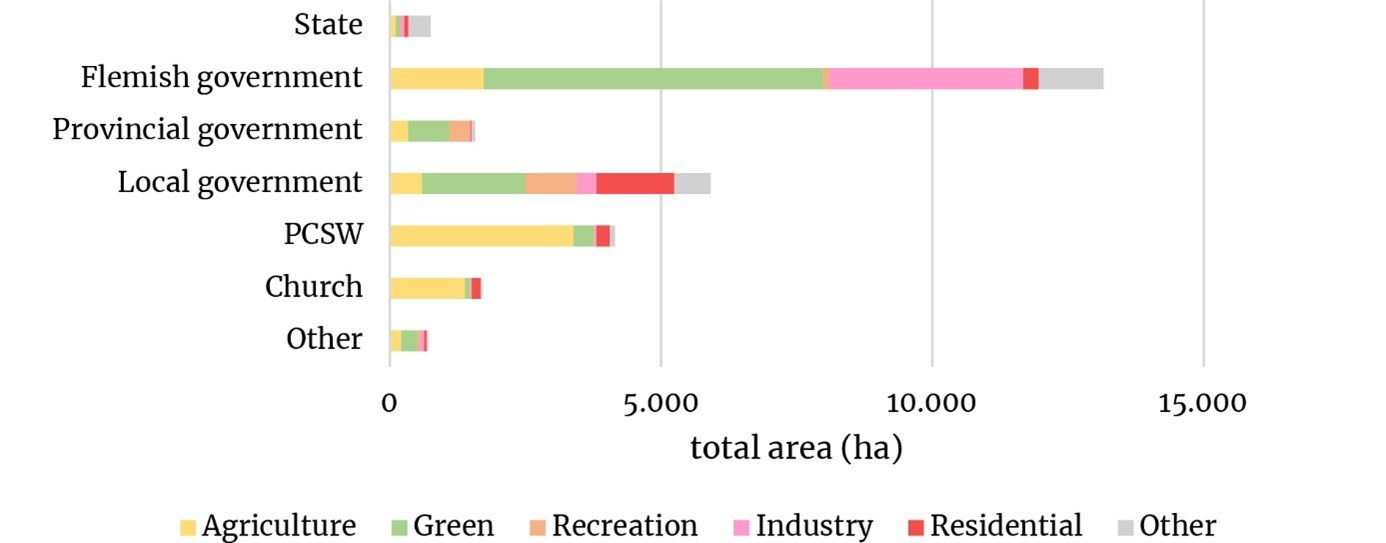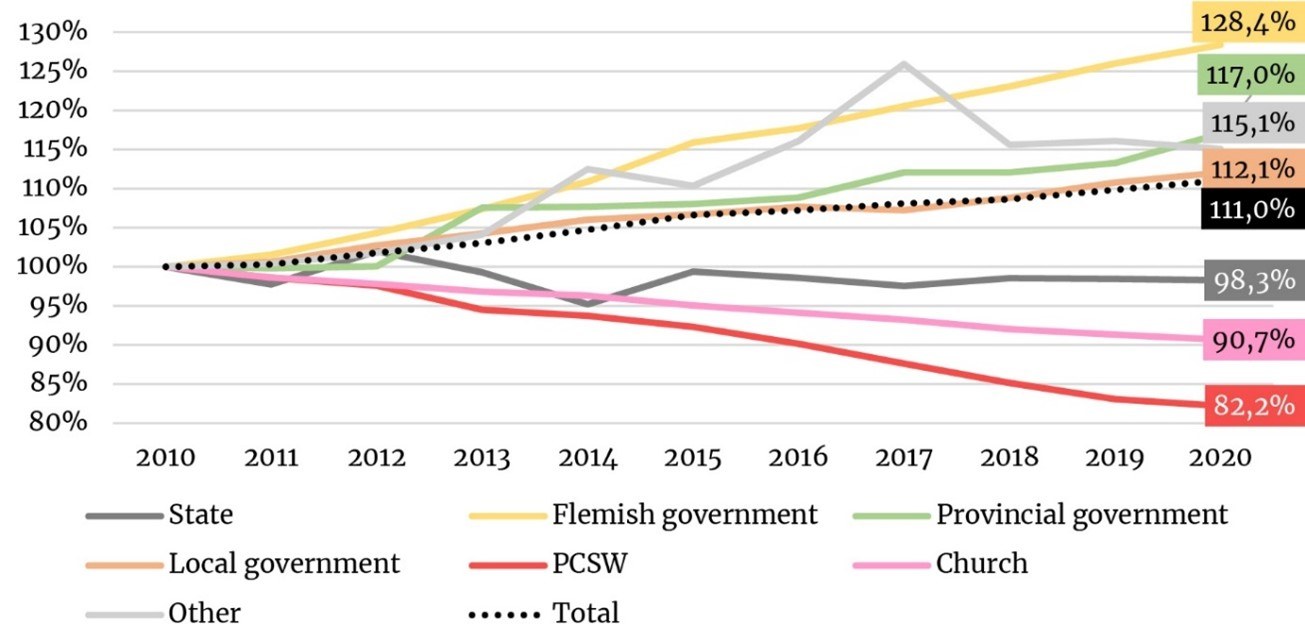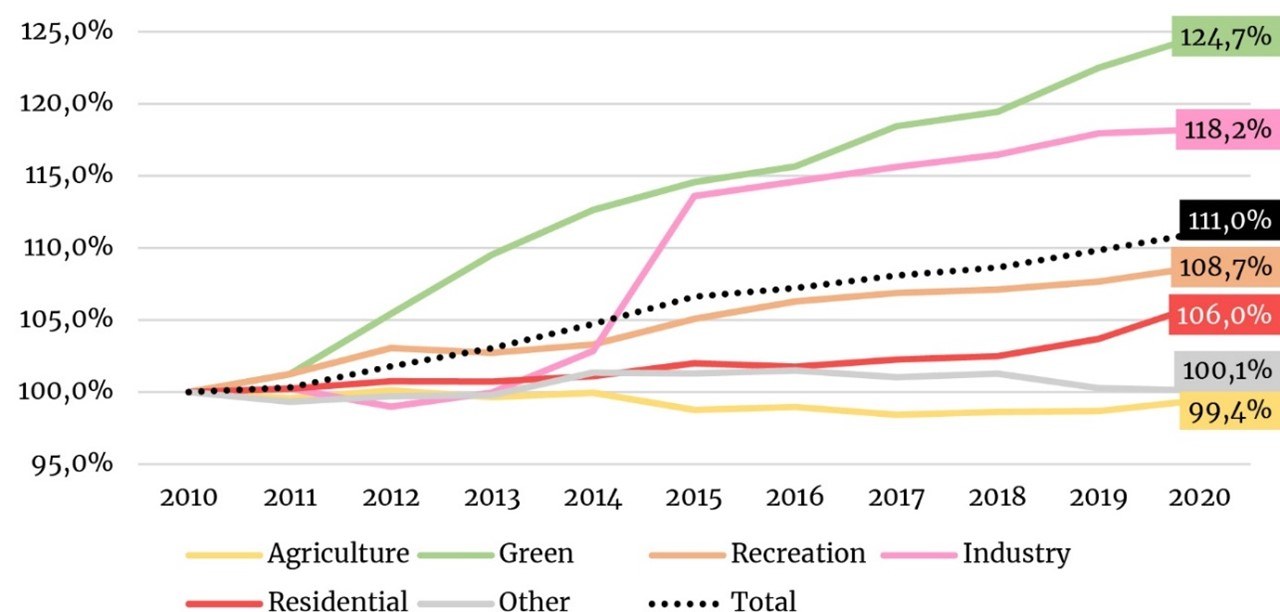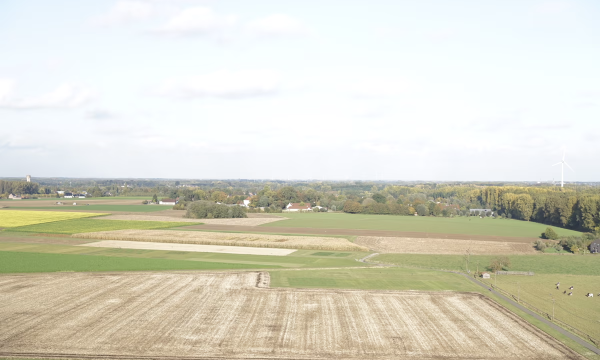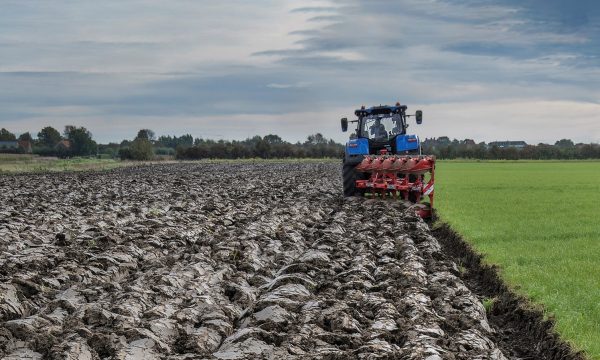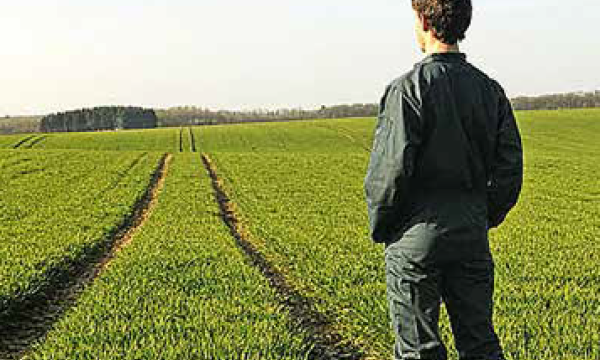Press release Evolution of public land ownership in Flanders inventoried for the first time
Analysis shows the absence of a conscious spatial agricultural policy and how this hinders sustainable agricultural transition.
Doctoral study Hans Vandermaelen (UGent - ILVO), defense in Ghent on 2 Februari 2023
Title: 'Urbanising the Agroecological Reproduction of Soil Fertility'
Promotors: Michiel Dehaene, UGent Chiara Tornaghi, Coventry University, UK
Elke Vanempten, ILVO
Municipalities, OCMWs, church wardens, provincial and higher authorities collectively own a great deal of land. For example, in East Flanders these publicly-owned lands represent more than 10% of the surface area, almost 28,000 ha. Over the last 10 years, this public land ownership has undergone a strong evolution through extensive purchases and sales. The reasons behind this include developments for nature, industry, recreation, housing, water management and infrastructure works, or generating money for their own projects. The conspicuous absence of the land management of public administrations is an agricultural policy. The analysis of public land transactions throughout the province of East Flanders between 2010 and 2020 yields only few examples with an agricultural or food objective. The doctoral research of Hans Vandermaelen (UGent - ILVO) brings this reality into sharp focus.
From cadastral research to unique cartography with great policy relevance
No comprehensive numerical or map material of the land ownership of public institutions existed until now. An analysis of raw land registry data shows that public institutions have property rights in over 10% of the territory of East Flanders, or nearly 28,000 hectares. Two thirds of these are in agricultural (7777 ha) or green areas (9771 ha). 'We inventoried not only the planning destination, but also the current agricultural use. This adds up to almost 10,000 ha of public land in agricultural use in East Flanders.' Especially the OCMWs (governmental social services) and the church wardens appear to own considerable amounts of agricultural land. They usually did not buy these lands themselves, but inherited them through their institutional predecessors from a distant past. This explains why the properties are often scattered throughout the region, outside their direct area of operation. The OCMW of Ghent appears to be one of the largest landowners in open space, but other OCMWs also own significant portions of open space.
Sales transactions have large effect on existing farms
Vandermaelen studied not only the total amount of public land ownership in 2020, but also its evolution between 2010 and 2020. Both the number of purchases and sales of public property is high.
'The argument is partly true: agricultural land usually remains agricultural land. But the negative impact on farms turns out to be much greater than suspected,' says Hans Vandermaelen. Through qualitative research, he uncovered the processes that take place on farms in the event of a sale.
The actual agricultural use can shift drastically. On the sales side, there is invariably a desire to get the highest possible price, which strengthens the position of wealthy actors on the purchase side that do not necessarily have agricultural objectives. Some tenants feel compelled to buy anyway and put themselves into debt. In this way, they hope to secure the future of their family farm, but this can make it unaffordable for their successors to take over the farm. When the land is sold to others, they have the right to terminate a lease if they want to farm it themselves.
A case study on OCMW Gent's properties also shows an assessment of the breadth of the phenomenon. In East Flanders, 160 different farmers lease more than 10% of their acreage from OCMW Ghent. On average it is even about 30%. 'Any sale of such OCMW land will most likely also affect the remaining 70%, as we know from previous research that the loss of even a small portion of farmland can lead to bankruptcy. Farmers who felt forced to buy their leasehold land expensively, on the other hand, risk ending up with a hard-to-acquire farm with a high debt ratio.'
The conclusion is that the spatial effect of a sale of public land, which traditionally served for agriculture, is about three times greater than you might expect. De facto, the future of 160 farms is being co-decided from Ghent. The OCMW Ghent case study suggests that throughout Flanders there are many hundreds of farms whose future partly depends on the land policy of public institutions. The negative impact of sales on the farms concerned has so far been underestimated or ignored. Its reality does not yet seem to have penetrated, even among public administrations that actively pursue a local food strategy.
Purchase transactions show absence of agricultural goals
The various public institutions and administrations showed themselves to be very active land buyers during the period 2010-2020. Despite the sell-off that reduced the total area of public land the total amount of public land increased by 11% in the last decade.
Most purchases are in nature and industrial areas, to achieve nature and economic policies. Agriculture as a driver is quasi absent from the purchase transactions. 'Analysis of all public land transactions over the past 10 years shows that there is little evidence of a land policy specifically for agricultural purposes.'Vandermaelen sees a paradox: 'Local governments, the Flemish government and, to a lesser extent, the province are very active in agricultural areas, but their land transactions have little or nothing to do with agricultural or food policy. Local and provincial institutions mostly make purchases to support water, nature, recreation, utility or mobility objectives. These range from birth forests and cemeteries to segregated bike paths and recycling parks. The Flemish government acquired a lot of additional land between 2010 and 2020. Its transactions in agricultural land are mainly linked to compulsory compensation for farmers who lost land elsewhere ... as part of a policy on nature development and flood management.'
Exemplary of all of Flanders?
'There is a strong suspicion that the figures and observations in East Flanders are exemplary for all of Flanders,' says Dr. Elke Vanempten, co-promotor and expert on agriculture and spatial planning at ILVO. 'They are completely in line with previous research that shows that the protection of space for agriculture in urbanized Flanders is undermined in a planned way by the numerous exceptions in regulations. There has long been a creeping problem in Flemish agricultural zones where, under high urbanization pressure, more and more other non-agricultural functions are appearing. Anyone can buy agricultural land, settle there and develop all kinds of non-agricultural activities.'
ILVO found earlier that on average 15% of agricultural space is not used for agricultural purposes. That so-called 'virtual agricultural land' is running higher in some areas. In the province of Antwerp, for example, 46% of spatially zoned agricultural land is already actually used by non-agricultural uses. The figures on public land add a new finding. They show how the absence of agricultural goals in the land policies of all public administrations puts further pressure on agricultural space.Urbanization model in connection with agricultural transition
'The conflict between the current model of urbanization and agriculture is by no means limited to the handling of public land,' UGent doctoral supervisor Prof. Michiel Dehaene of the Department of Architecture and Urban Planning agreed. Vandermaelen's doctoral research was part of a larger international research project Urbanising in Place that he coordinated (www.agroecologicalurbanism.org). This involved working with agroecological farming communities in Belgium, England, Latvia and Argentina. 'For them, urbanization feels like a threat,' says Dehaene. 'So is it today. Current urbanization processes are aimed at supporting a global food system and making local food production expendable. It creates the illusion that an urbanized society can manage without farmers and that therefore there will be no problem when space for agriculture shrivels up structurally, when workable land and farms become unaffordable and when farmers and their agricultural knowledge visibly disappear.'
The researchers involved note that the same urban society does count on its remaining farmers to meet major societal challenges. Besides providing food, agriculture is looked to for maintaining the landscape, providing ecosystem services, mowing and grazing natural areas, storing carbon in the soil and many other tasks. 'That explains the growing focus on agroecological and nature-inclusive agriculture,' Dehaene said. 'But that farming will not come naturally, especially in an urbanized landscape. Farmers will only be able to meet society's expectations if there is also a more supportive environment for them.' Vandermaelen adds, 'A viable context means not only sufficient physical space, but also a long-term perspective, collective infrastructure, a fair distribution of added value and a supportive land policy.'Agricultural policy IN land policy
Now that the blind spot over public land tenure and the absence of land policy for agricultural purposes in the management of that land tenure has been documented, perhaps opportunities and new insights can grow.
The need for more policy cooperation and a more integrated, spatial vision of agriculture is pressing. 'That urgent question resonates at least with the farmers themselves.' Hans Vandermaelen questioned them in his participatory research around the challenges of agroecological agriculture in urbanized Flanders. Agroecological farmers strive for an autonomous, fully land-bound agriculture in which cycles are closed between arable, livestock and horticulture, but also between arable land, pasture and nature reserve.'The landscape connections and collaborations involved in this require conscious, planned efforts,' Vandermaelen says. 'You can't rely on just the individual commitment of the farmer. There is also a need for collective care and direction.'
There is a link there with the urban perspective and with the management of public lands and, from where a long-term vision of agricultural and food policy could start. Governments are at the wheel of their own land policies. A long-term perspective on those lands could give farmers more certainty to invest in a conversion, with a guarantee that they themselves can reap the benefits of their efforts.
Just when the agricultural sector is facing gigantic challenges, this research shows that the land policies of public institutions are characterized by a quasi-total absence of agricultural goals. At the same time, for many other policy areas, the analysis also shows the importance of public land ownership in successfully achieving policy goals. With 10% public land, there is still great potential to achieve targeted agricultural policies as well.

